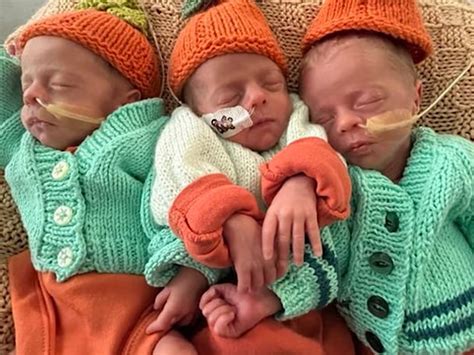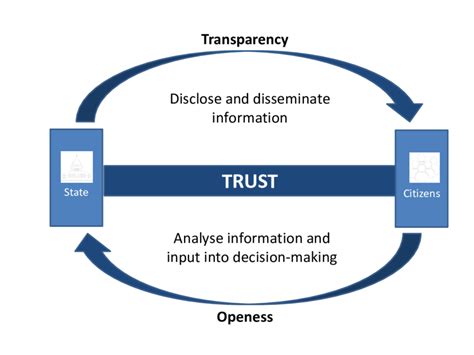
Against considerable odds, a Texas couple has celebrated the arrival of identical triplets, a rare occurrence estimated to happen in one out of 200 million pregnancies. Megan and Thomas Barnes welcomed their three daughters, Hazel, Olive, and Poppy, on January 12, defying low fertility chances and embracing a joyous, albeit unexpected, expansion of their family.
Megan and Thomas Barnes, who had been trying to conceive for three years, initially faced low fertility prospects. After consulting with fertility specialists, they began intrauterine insemination (IUI) treatment. “We weren’t planning on having any kids, and then we had trouble getting pregnant,” Megan Barnes explained. “So we ended up doing IUI, and it worked the first time.” The surprise came during their seven-week ultrasound when the technician identified not one, but three heartbeats. “I just was in complete shock,” Megan recounted. “I couldn’t talk. Thomas was like, ‘Is that three?’ And she was like, ‘Yeah, that’s three.'”
The rarity of identical triplets stems from a single fertilized egg splitting into three separate embryos, a spontaneous event that’s statistically improbable. According to Dr. Aisha Wagner, a high-risk pregnancy specialist (MFM) at Memorial Hermann in Houston, the odds are incredibly slim. “The chances of having spontaneous identical triplets is somewhere between one in 60,000 to one in 200 million pregnancies,” Dr. Wagner stated. Adding to the complexity, the triplets shared the same placenta and amniotic sac, classified as “mono mono mono” triplets, which poses significant risks. These risks include twin-twin transfusion syndrome (TTTS), cord entanglement, and unequal sharing of nutrients, requiring meticulous monitoring throughout the pregnancy.
Megan was closely monitored at Memorial Hermann The Woodlands Medical Center. Her care team, led by Dr. Wagner, conducted frequent ultrasounds and check-ups to ensure the healthy development of all three babies. She was admitted to the hospital at 24 weeks for continuous observation. “It’s just been really helpful knowing that I’m being so closely watched because that’s definitely nerve-racking having mono mono mono triplets,” Megan said before the delivery.
The triplets were delivered via Cesarean section at 32 weeks gestation. Hazel weighed 3 pounds, 1 ounce; Olive weighed 2 pounds, 15 ounces; and Poppy weighed 2 pounds, 11 ounces. All three were immediately admitted to the neonatal intensive care unit (NICU) for specialized care. “They’re doing really, really well,” Megan reported shortly after the birth. “They’re all breathing on their own.”
After spending several weeks in the NICU to gain strength and fully develop, Hazel, Olive, and Poppy were discharged home to join their parents. The Barnes family is now adjusting to life with triplets, navigating the challenges and joys of caring for three newborns simultaneously. They have received an outpouring of support from family, friends, and their community, which has been invaluable in their transition.
The Barnes’ story has captured significant public attention, highlighting not only the rarity of their triplets but also the advancements in fertility treatments and neonatal care that made their healthy arrival possible. The medical team at Memorial Hermann emphasized the importance of specialized care for high-risk pregnancies, particularly those involving multiple gestations with shared placental structures.
Medical Background and Risks of Identical Triplets
Identical triplets, also known as monozygotic triplets, occur when a single fertilized egg splits into three separate embryos. This is a spontaneous event that is not typically associated with fertility treatments, although fertility treatments can increase the chances of multiple pregnancies in general. Monozygotic multiple pregnancies are considered high-risk due to the increased potential for complications compared to singleton pregnancies.
The classification of triplets as “mono mono mono” refers to the chorionicity and amnionicity of the pregnancy. “Mono” indicates that the babies share the same chorion (outer membrane) and amnion (inner membrane). In mono mono mono triplets:
- MonoChorionic: The triplets share a single placenta. This means they are all connected to the same blood supply, increasing the risk of unequal sharing of nutrients and blood flow imbalances.
- MonoAmniotic: The triplets share a single amniotic sac. This means they are all floating within the same fluid-filled sac, leading to a higher risk of umbilical cord entanglement and compression.
Risks Associated with Mono Mono Mono Triplets:
- Twin-Twin Transfusion Syndrome (TTTS): Although the term refers to twins, similar imbalances can occur in triplets sharing a single placenta. TTTS involves one baby (the donor) transferring blood to another (the recipient). The donor baby can become anemic and have poor growth, while the recipient baby can develop heart problems due to fluid overload.
- Umbilical Cord Entanglement and Compression: Because the triplets share the same amniotic sac, their umbilical cords can become entangled, restricting blood flow and oxygen supply to the babies. Cord compression can lead to fetal distress and, in severe cases, fetal demise.
- Premature Birth: Multiple pregnancies often result in premature birth. Premature babies are at higher risk for a range of health problems, including respiratory distress syndrome (RDS), intraventricular hemorrhage (IVH), necrotizing enterocolitis (NEC), and long-term developmental issues.
- Unequal Sharing of Nutrients: With a shared placenta, there’s a risk that one or more of the triplets may not receive adequate nutrients, leading to growth restriction and potential developmental problems.
- Increased Risk of Congenital Anomalies: Multiple pregnancies are associated with a slightly higher risk of congenital anomalies, although this risk is more pronounced in dizygotic (fraternal) multiples.
- Maternal Complications: Mothers carrying mono mono mono triplets face a higher risk of complications such as preeclampsia, gestational diabetes, preterm labor, and postpartum hemorrhage.
Management and Monitoring:
Given the high risks associated with mono mono mono triplets, close monitoring and specialized care are essential. Management strategies typically include:
- Frequent Ultrasounds: Regular ultrasound exams are performed to monitor fetal growth, amniotic fluid levels, and blood flow through the umbilical cords. Doppler studies are used to assess blood flow patterns and detect signs of TTTS or cord compression.
- Fetal Echocardiography: This specialized ultrasound examines the structure and function of the babies’ hearts to detect any abnormalities.
- Maternal Monitoring: The mother’s health is closely monitored for signs of preeclampsia, gestational diabetes, and preterm labor.
- Hospital Admission: Many women carrying mono mono mono triplets are admitted to the hospital for continuous monitoring around 24-26 weeks gestation. This allows for rapid intervention if complications arise.
- Corticosteroids: If preterm labor is suspected, corticosteroids may be administered to help mature the babies’ lungs.
- Planned Delivery: Due to the high risks, delivery is typically planned between 32 and 34 weeks gestation. Cesarean section is usually recommended.
- Neonatal Intensive Care Unit (NICU) Care: The triplets will require specialized care in the NICU after birth. The NICU team is equipped to manage the unique challenges faced by premature babies, including respiratory support, nutritional support, and monitoring for complications.
Impact of Fertility Treatments
While identical triplets are not directly caused by fertility treatments, fertility treatments can increase the overall chance of multiple pregnancies. Techniques such as in vitro fertilization (IVF) often involve transferring multiple embryos to the uterus, increasing the likelihood of twins, triplets, or higher-order multiples. Intrauterine insemination (IUI), as used by the Barnes family, can also increase the risk of multiple pregnancies, particularly when combined with ovulation-stimulating medications. These medications can cause the release of multiple eggs, increasing the chance of multiple fertilization.
Psychological and Social Impact
The arrival of triplets can have a significant psychological and social impact on the parents. Raising three babies simultaneously presents unique challenges, including increased financial strain, sleep deprivation, and emotional stress. Parents of triplets often require extensive support from family, friends, and community resources.
Support groups for parents of multiples can provide valuable emotional support, practical advice, and a sense of community. These groups offer a forum for sharing experiences, coping strategies, and resources. Additionally, professional counseling can help parents navigate the emotional challenges of raising triplets and maintain their mental well-being.
Financial Implications
The financial implications of raising triplets are substantial. The cost of diapers, formula, clothing, and healthcare is significantly higher for triplets than for a single child. Parents may also need to purchase specialized equipment, such as triple strollers and larger vehicles.
Some financial assistance programs are available to help families with multiples. These may include government benefits, charitable organizations, and discounts from retailers. Additionally, some hospitals and healthcare providers offer financial counseling to help families plan for the costs associated with raising triplets.
Ethical Considerations
The use of fertility treatments raises ethical considerations related to multiple pregnancies. Some experts argue that fertility clinics have a responsibility to minimize the risk of multiple pregnancies by limiting the number of embryos transferred during IVF. Selective reduction, a procedure in which one or more fetuses are terminated in a multiple pregnancy, is another ethically complex issue that parents may face. This decision is often made to improve the chances of survival and healthy development for the remaining fetuses.
The Future for the Barnes Family
For Megan and Thomas Barnes, the future undoubtedly holds significant challenges and immense joy. As they navigate the complexities of raising identical triplets, they will rely on the support of their family, friends, and community. The story of Hazel, Olive, and Poppy serves as a testament to the resilience of the human spirit and the power of modern medicine to overcome seemingly insurmountable odds. The ongoing developments in neonatal care also promise to provide the best possible start in life for these three little girls. Their journey is a reminder of the extraordinary possibilities and the profound responsibilities that come with bringing new life into the world.
The family has set up a registry and accepted donations to help with the costs associated with raising triplets, demonstrating the community’s support and recognition of the unique challenges they face. This collective effort highlights the broader societal understanding of the complexities and expenses involved in raising multiple children, especially in such a rare and demanding situation. The Barnes family’s story continues to resonate with many, offering hope and inspiration while underscoring the importance of accessible and advanced medical care.
Advancements in Neonatal Care
The successful outcome for the Barnes triplets is also a reflection of the significant advancements in neonatal care over the past few decades. These advances have dramatically improved the survival rates and long-term outcomes for premature babies and those with complex medical needs. Some key advancements include:
- Surfactant Therapy: Surfactant is a substance that helps keep the air sacs in the lungs open. Premature babies often lack sufficient surfactant, leading to respiratory distress syndrome (RDS). Surfactant therapy involves administering synthetic surfactant to the baby’s lungs, which significantly improves breathing and reduces the need for mechanical ventilation.
- Continuous Positive Airway Pressure (CPAP): CPAP is a non-invasive form of respiratory support that delivers pressurized air to the baby’s lungs through a mask or nasal prongs. CPAP helps keep the air sacs open and reduces the work of breathing.
- High-Frequency Oscillatory Ventilation (HFOV): HFOV is a type of mechanical ventilation that delivers very small, rapid breaths to the baby’s lungs. HFOV is often used for babies with severe lung disease who are not responding to conventional ventilation.
- Total Parenteral Nutrition (TPN): TPN is a method of providing nutrition intravenously. Premature babies may not be able to tolerate oral feedings initially, so TPN is used to provide them with the necessary nutrients for growth and development.
- Developmental Care: Developmental care focuses on creating a supportive and stimulating environment for premature babies in the NICU. This includes minimizing noise and light, promoting skin-to-skin contact (kangaroo care), and providing individualized care based on the baby’s developmental needs.
- Advanced Monitoring: Sophisticated monitoring equipment allows NICU staff to closely track the baby’s vital signs, including heart rate, breathing rate, blood pressure, and oxygen saturation. This allows for early detection of problems and prompt intervention.
- Hypothermia Therapy: Hypothermia therapy involves cooling the baby’s body temperature to a slightly lower level for a period of time. This therapy can help protect the brain from damage in babies who have experienced oxygen deprivation during birth.
These advancements, combined with the expertise of neonatologists, nurses, and other healthcare professionals, have transformed the care of premature babies and significantly improved their chances of survival and healthy development. The Barnes triplets benefited from these advancements during their time in the NICU, contributing to their positive outcomes.
The Role of Community and Support Systems
The Barnes family’s story underscores the importance of community and support systems in navigating the challenges of raising triplets. The outpouring of support from family, friends, and the community has been invaluable to Megan and Thomas as they adjust to life with three newborns.
Support can come in many forms, including:
- Emotional Support: Family and friends can provide emotional support by listening to the parents’ concerns, offering encouragement, and helping them cope with stress.
- Practical Assistance: Practical assistance can include helping with childcare, preparing meals, running errands, and providing transportation.
- Financial Support: Financial support can come from family, friends, charitable organizations, and government programs.
- Information and Resources: Support groups and online forums can provide parents with valuable information and resources about raising triplets, including tips on feeding, sleeping, and managing their time.
The Barnes family’s decision to share their story publicly has also helped raise awareness about the challenges and joys of raising multiples. Their experience can serve as an inspiration to other families facing similar situations and highlight the importance of seeking support when needed.
Future Research and Considerations
The case of the Barnes triplets, while extraordinary, also highlights the ongoing need for research into multiple pregnancies and neonatal care. Areas for future research include:
- Improving Prediction and Prevention of Complications: Developing better methods for predicting and preventing complications such as TTTS, cord entanglement, and premature birth.
- Optimizing Nutritional Support: Identifying the optimal nutritional strategies for premature babies and those with complex medical needs.
- Understanding Long-Term Outcomes: Conducting long-term studies to assess the developmental outcomes of children born as triplets and to identify factors that contribute to their success.
- Addressing Ethical Considerations: Continuing to explore the ethical considerations related to fertility treatments and multiple pregnancies, including the potential for selective reduction.
- Enhancing Support Systems: Developing and expanding support systems for families of multiples, including access to affordable childcare, financial assistance, and mental health services.
By continuing to invest in research and support systems, we can improve the lives of families like the Barneses and ensure that all children have the opportunity to thrive. The journey of Hazel, Olive, and Poppy is a testament to the power of hope, resilience, and the unwavering dedication of healthcare professionals and the community that supports them.
Frequently Asked Questions (FAQ)
1. How rare are identical triplets, and what are the chances of conceiving them?
Identical triplets, also known as monozygotic triplets, are exceptionally rare. The chances of conceiving them spontaneously are estimated to be between one in 60,000 to one in 200 million pregnancies, as stated by Dr. Aisha Wagner, a high-risk pregnancy specialist at Memorial Hermann in Houston. This rarity stems from the fact that a single fertilized egg must split into three separate, identical embryos.
2. What are the primary risks associated with mono mono mono triplets, and how are they managed during pregnancy?
Mono mono mono triplets share a single placenta and amniotic sac, which presents several significant risks:
- Twin-Twin Transfusion Syndrome (TTTS): Imbalance in blood flow between the babies.
- Umbilical Cord Entanglement and Compression: Due to the shared amniotic sac.
- Premature Birth: Common in multiple pregnancies.
- Unequal Sharing of Nutrients: Among the triplets.
Management strategies include frequent ultrasounds to monitor growth and blood flow, fetal echocardiography, maternal monitoring for complications like preeclampsia and gestational diabetes, and often hospital admission for continuous observation, as was the case with Megan Barnes. Delivery is typically planned between 32 and 34 weeks via Cesarean section, followed by specialized care in the NICU.
3. Did fertility treatments contribute to the Barnes’ conceiving identical triplets?
While identical triplets themselves are not directly caused by fertility treatments, the use of fertility treatments, such as intrauterine insemination (IUI) in the Barnes’ case, can increase the overall likelihood of multiple pregnancies. IUI, especially when combined with ovulation-stimulating medications, can cause the release of multiple eggs, increasing the chances of multiple fertilization events. However, the splitting of a single fertilized egg into identical triplets remains a spontaneous and rare occurrence.
4. What type of specialized care did Hazel, Olive, and Poppy receive in the NICU, and why was it necessary?
Hazel, Olive, and Poppy received comprehensive care in the Neonatal Intensive Care Unit (NICU) due to their premature birth at 32 weeks gestation. The NICU care included:
- Respiratory Support: To help with breathing, as premature babies often have underdeveloped lungs.
- Nutritional Support: Via intravenous nutrition (TPN) until they were able to tolerate oral feedings.
- Monitoring: For vital signs, including heart rate, breathing rate, and oxygen saturation.
- Developmental Care: Creating a supportive and stimulating environment to promote healthy development.
This specialized care was crucial to address the challenges associated with prematurity, such as respiratory distress syndrome, difficulty feeding, and increased risk of infection.
5. What kind of support and resources are available for families raising triplets, and how can the community help?
Families raising triplets face significant financial, emotional, and logistical challenges. Available support and resources include:
- Financial Assistance: Government benefits, charitable organizations, and discounts from retailers.
- Emotional Support: Support groups for parents of multiples, counseling services, and assistance from family and friends.
- Practical Assistance: Help with childcare, meal preparation, errands, and transportation.
The community can help by offering practical support, donating to the family’s registry, raising awareness about the challenges of raising multiples, and advocating for policies that support families with multiple children. The Barnes family’s story highlights the importance of community support in helping families navigate the complexities and joys of raising triplets.









